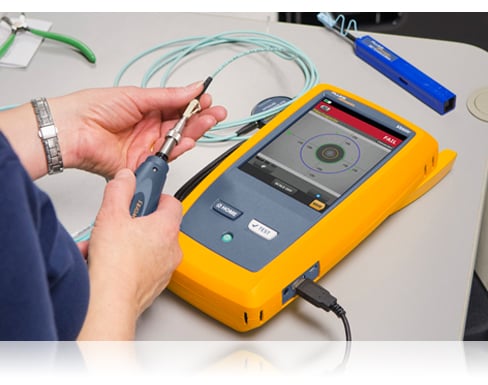All You Need to Find Out About Robotic Vision and Its Applications in Advanced Optical Dimension Equipments
Robotic vision represents a significant improvement in the junction of computer vision, expert system, and artificial intelligence. This innovation boosts the accuracy of optical dimension systems, making it possible for real-time data analysis and improved quality assurance. Its influence extends numerous fields, from making to health care. Nonetheless, the evolving landscape of robotic vision questions regarding future capabilities and applications (optical measurement system). What advancements lie ahead in this transformative field?
Recognizing Robotic Vision: Trick Concepts and Technologies
Robotic vision incorporates the modern technologies and techniques that allow devices to analyze and recognize aesthetic info from their environment. This field incorporates elements of computer vision, expert system, and artificial intelligence to facilitate automatic decision-making based on aesthetic data. Secret ideas include picture handling, which entails the improvement and analysis of photos to extract significant functions, and things acknowledgment, which enables machines to identify and classify objects within a scene.

The Combination of Robotic Vision With Optical Dimension Systems
As industries increasingly demand accuracy and performance, the combination of robot vision with optical dimension systems has actually become a transformative method. This synergy allows robotics to regard and analyze their environments, boosting the capability of optical dimension systems to examine and evaluate items with exceptional precision. By equipping optical sensors with innovative imaging innovations, robot vision makes it possible for real-time data collection and processing, facilitating instant adjustments to measurement specifications.
The mix empowers automated systems to identify variations in dimensions, surface quality, and placement, which are critical in quality control processes. Boosted algorithms, such as artificial intelligence, more boost this combination by improving the systems' capacity to adjust to different settings and scenarios. The integration not only enhances dimension procedures however likewise reduces errors, ensuring that items satisfy stringent sector standards, therefore solidifying the role of robotic vision in the future of optical dimension systems.
Applications of Robotic Vision in Production
In modern-day production environments, using vision systems has transformed production procedures by enabling devices to do tasks with amazing precision and rate. Robotic vision systems are significantly utilized for quality assurance, where they inspect products for problems and assurance adherence to requirements. These systems use cams and progressed formulas to examine items in real-time, substantially reducing the threat of human mistake.
In addition, robot vision helps with automation in production line, permitting robots to accurately recognize parts and assemble them with minimal downtime. This technology additionally improves supply management, as vision systems can keep track of supply degrees and identify disparities, assuring a seamless supply chain.
Robotic vision aids in the execution of wise manufacturing facilities, where data from vision systems can be incorporated with various other technologies to maximize process (robotic vision). In general, the applications of robot vision in manufacturing demonstrate its essential role in enhancing efficiency, quality, and efficiency across different markets
Robotic Vision in Medical Care: Transforming Client Treatment

In recovery, robot vision help in checking client progress and customizing treatment sessions to private needs. It supports physician by automating tasks such as data collection and client surveillance, enabling even more time to focus on straight individual communication. Furthermore, robotic vision boosts telemedicine by making it possible for remote diagnosis and digital appointments, linking the space between clients and healthcare suppliers. On the whole, the application of robotic vision in medical care is changing individual care, leading to boosted results, performance, and individual satisfaction.
Future Patterns and Developments in Robotic Vision Modern Technology
The fast advancement of robotic vision innovation promises to additionally boost its applications throughout various industries, including medical care. Future fads suggest a significant change towards integrating synthetic knowledge and equipment understanding, making it possible for systems to pick up from huge datasets and boost precision with time. Improved sensor innovations and deep knowing algorithms are expected to refine item acknowledgment abilities, allowing robots to analyze complex atmospheres better.

The combination of augmented fact (AR) with robot vision will reference likely change exactly how robotics help in medical treatments and diagnostics. This synergy will certainly help with real-time information visualization, enhancing decision-making processes. Furthermore, miniaturization of parts will certainly result in even more portable and flexible robotic vision systems suitable for a variety of tasks. As these improvements unfold, industries will certainly witness enhanced automation and effectiveness, solidifying robot vision as a keystone of cutting-edge technical solutions.
Frequently Asked Concerns
What Are the Key Components of a Robotic Vision System?
The major elements of a robotic vision system include cameras for picture capture, cpus for data evaluation, formulas for interpretation, and actuators for activity. With each other, these aspects enable robots to regard and interact with their atmosphere properly.
Just How Does Robotic Vision Improve Accuracy in Measurements?
Robotic vision improves dimension precision by making use of sophisticated imaging technologies, allowing exact things detection and spatial analysis. This capacity reduces human mistake, raises repeatability, and enables for real-time adjustments, eventually improving general measurement reliability and performance.
What Industries Benefit Many From Robotic Vision Technology?
Numerous sectors benefit considerably from robotic vision innovation, including production, healthcare, agriculture, and logistics. These industries make use of enhanced accuracy, performance, and automation, resulting in boosted efficiency and reduced functional costs in their corresponding procedures.
Can Robotic Vision Solutions Operate In Low-Light Conditions?
Robotic vision systems can undoubtedly function in low-light conditions, utilizing innovative sensing units and algorithms to enhance picture clarity. This capability allows them to perform effectively in different settings, including industrial and security additional resources applications, despite minimal lighting.
What Are the Prices Related To Carrying Out Robotic Vision?
The prices connected with implementing robotic vision vary substantially, affected by components such as cameras, software application, and assimilation. Added expenditures consist of maintenance, training employees, and possible upgrades to existing systems, which can build up over time.